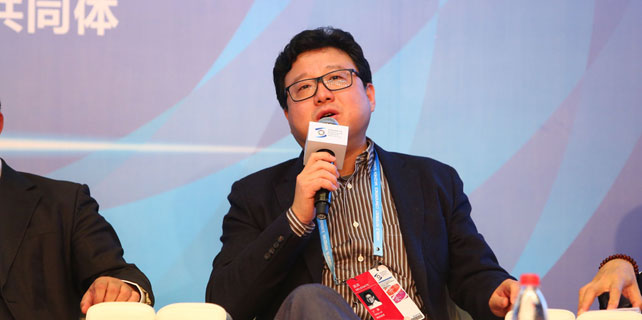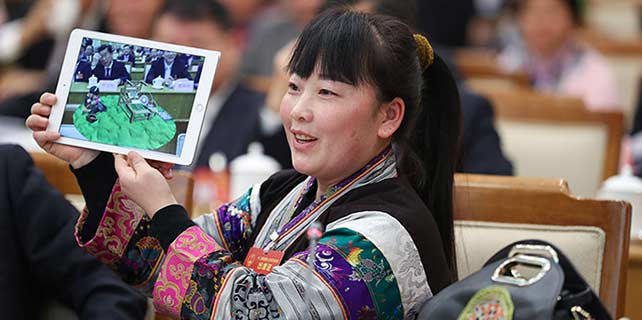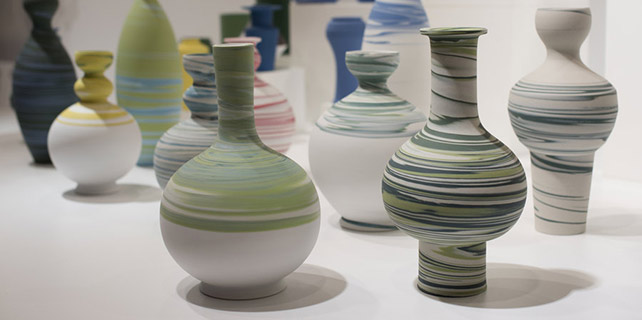Chinese scientist finds winning formula in the UK
Ling Hao's elegant dress and demeanor give few hints that she is not only a leading physicist who conducts cutting-edge research, but also a great sports fan and participant.
Since 1995, she has worked at the United Kingdom's National Physical Laboratory, a renowned center in measurement and materials science.
|
 |
| Ling Hao |
"When I joined the NPL, I was the first foreign female working in my group but I also talked about football and tennis," she says. "Most scientists don't like sport and the all the men would say, 'what a strange woman!'"
One of her main areas of research is graphene, which is very difficult to measure because it is only one atom thick but about 200 times stronger than steel and an efficient conductor of heat. The material has numerous potential uses, ranging from green technology to cancer treatments.
Accidents of history as well as sheer determination helped Hao, 53, get to where she is now. Her earliest ambition, growing up in Kunming in Southwest China's Yunnan province, was to work in a factory, a reflection of the ideals of the time from the "cultural revolution" (1966-76). As China started to open up and a more academic schooling system took shape, she aspired to be a doctor, like her mother.
But her physics teacher spotted her potential, giving her extra study material that was written in Russian and which he would translate. When she achieved second place in exam results for her province, it was still not enough to get into the top medical school because it only offered places to first-place students. She was, however, first in physics and was offered a place at Beijing Normal University to study there.
"I thought, if I could not be a doctor, then I could be an academic and teacher and still help people, so it was still good for a second choice," Hao said."I remember going to Beijing for university. I was 18 and it was 1980 and I'd never been away from home. It took three days by train to get there. The weather and food were completely different, but I loved it."
Hao also won prizes for her athletics prowess and played on the volleyball team. She was one of only three people in her year to pass their exams and progress to take an MSc, getting her started on theoretical physics.
She found it hard but struggled on and had two papers published in the Journal of Physics. In those days, this meant submitting physical manuscripts written by hand and posting them to the UK.
She jokes that the work also took a physical toll.
"My supervisor had one of the first computers, which I was using. All the flashing lights are the reason why I have to wear glasses now!" she said.
After graduating, she worked as an engineer at the Yu-San Petrochemical company in Beijing.
"I grew up in a middle-class family and had mostly known other academics. That year, I met engineers and other different people and this was very good."
By 1989, she was married and working as a lecturer at the Beijing Institute of Petrochemical Engineering when her husband received funding to study for a PhD at the UK's University of York. A year later, she followed him. She then applied and received her own funding to study for a PhD in applied physics at Scotland's University of Strathclyde.
The couple left their 1-year-old daughter with grandparents in Beijing because money was tight, bringing her over to Scotland three years later.
After only three months, her daughter was speaking English and has grown up in the UK, studying economics at Cambridge before becoming an investment banker. Hao's son is preparing for university and will pursue either a science or mathematics degree. Hao's husband is now a senior lecturer in mechanical engineering at London's Brunel University.
Hao has been with the NPL since completing her PhD and has been at the forefront of developing a new international graphene standards and testing center located in the Zhongguancun Fengtai Science Park in Beijing.
"This opens a window for the NPL in China and I go there at least two or three times a year," she said."I like to use my links to help the two countries work together and maybe we can make faster progress in graphene, together, than other countries."









